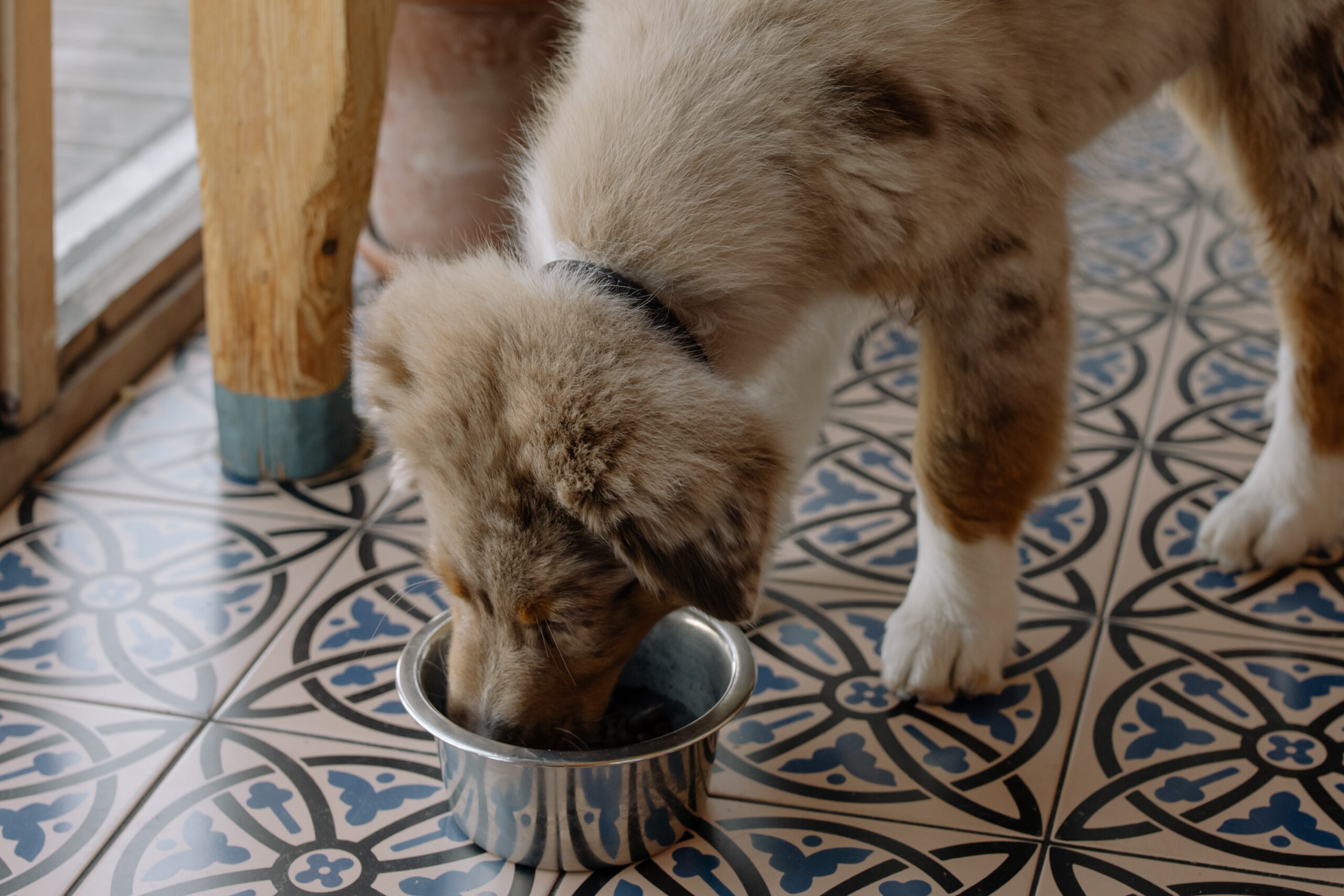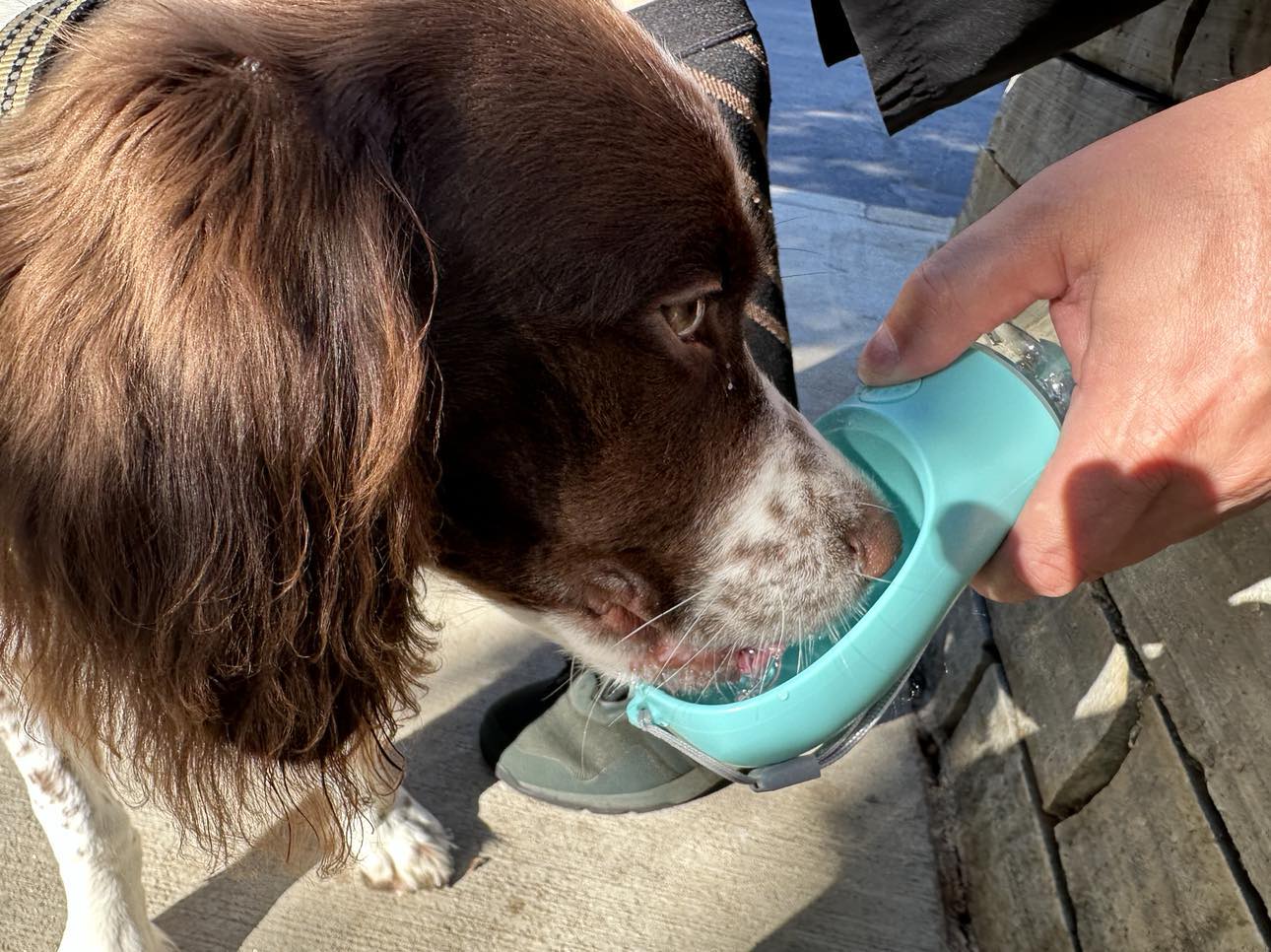Dogs are cherished members of our families, bringing joy, loyalty, and companionship to our lives. As responsible pet owners, it’s essential to ensure that our furry friends receive the care they deserve. One often overlooked yet crucial aspect of canine well-being is ear hygiene. Just like humans, dogs require regular ear cleaning to maintain their health and comfort. In this comprehensive guide, we will delve into the significance of regular ear cleaning for dogs, explore the common ear issues they face, and uncover the numerous benefits that proper ear hygiene brings to your canine companion.
Ear cleaning might not be the first thing that comes to mind when caring for your dog, but it plays a pivotal role in their overall health. A dog’s ears are more than just adorable floppy or perky features; they are complex structures that require attention to prevent discomfort and potential complications. Regular ear cleaning helps to:
- Prevent Infections: Dogs are prone to ear infections, especially those with floppy ears or those that love water activities. Cleaning the ears helps remove excess moisture and debris, reducing the risk of bacterial and fungal infections.
- Maintain Ear Health: Just like humans, dogs can accumulate wax and dirt in their ears. Regular cleaning prevents wax buildup, which can lead to blockages, discomfort, and reduced hearing.
- Alleviate Discomfort: Ear discomfort can significantly affect a dog’s quality of life. Routine cleaning can help soothe itching, redness, and irritation, ensuring your furry friend remains happy and comfortable.
- Detect Early Signs of Problems: Regular ear cleaning provides an opportunity to inspect your dog’s ears closely. This allows you to identify any red flags, such as inflammation, foul odors, or unusual discharge, and seek veterinary care promptly.
Dogs are susceptible to a range of ear-related issues that can impact their well-being. Some of the most common ear problems include:
- Ear Infections: Dogs can develop bacterial or yeast infections in their ears, leading to discomfort, odor, and discharge.
- Ear Mites: These microscopic pests can cause intense itching and irritation in a dog’s ears.
- Wax Buildup: Accumulated earwax can obstruct the ear canal, causing hearing difficulties and discomfort.
- Foreign Objects: Dogs, especially those with a curious nature, might get foreign objects like grass seeds or debris lodged in their ears.
Maintaining proper ear hygiene offers a host of benefits that contribute to your dog’s overall health and happiness:
- Enhanced Comfort: Clean ears are comfortable ears. Regular cleaning prevents itchiness, redness, and pain caused by infections and debris.
- Improved Hearing: A clean ear canal allows for better sound transmission, ensuring your dog can hear and respond to their environment effectively.
- Bonding Time: The process of cleaning your dog’s ears can be an opportunity for bonding and trust-building, strengthening your relationship.
- Early Problem Detection: Routine cleaning enables you to spot potential issues early, allowing for timely intervention and treatment.
As we journey through this guide, we will equip you with the knowledge and practical steps needed to ensure your dog’s ears remain healthy, clean, and free from discomfort. By incorporating regular ear cleaning into your pet care routine, you’re taking a proactive step towards providing the best possible life for your furry companion.
Understanding Your Dog’s Ear Anatomy
Brief Overview of Dog Ear Anatomy
Before embarking on the journey of cleaning your dog’s ears, it’s essential to familiarize yourself with the intricate structure of their ears. A dog’s ear is a remarkable combination of form and function, designed to capture sounds, maintain balance, and protect the inner ear. Understanding the basics of dog ear anatomy sets the foundation for effective and safe cleaning practices.
Identifying the Different Parts of the Ear
- External Ear: The external ear, also known as the pinna or auricle, is the visible part of your dog’s ear. It comes in various shapes and sizes, from upright to floppy, and contributes to sound collection.
- Ear Canal: The ear canal is a tube-like structure that leads from the external ear to the eardrum. It is lined with delicate skin and contains ceruminous glands that produce earwax.
- Eardrum (Tympanic Membrane): The eardrum separates the external ear from the middle ear. It vibrates in response to sound waves and transmits them to the middle ear.
- Middle Ear: The middle ear contains the ossicles, which are tiny bones that amplify sound vibrations. It also connects to the Eustachian tube, which helps equalize pressure.
- Inner Ear: The inner ear is responsible for translating sound vibrations into nerve impulses that are sent to the brain. It also plays a crucial role in balance.
How Ear Structure Affects Cleaning Approach
The unique structure of a dog’s ear influences the way you should approach the cleaning process:
- External Ear Cleaning: Cleaning the visible part of the ear, the pinna, is relatively straightforward. Use a damp cloth or a dog-safe ear wipe to gently clean the folds and crevices. Be cautious not to insert anything deep into the ear canal, as this could damage the delicate structures.
- Ear Canal Cleaning: The ear canal is sensitive, and the skin is easily irritated. When cleaning the ear canal, it’s crucial to use a veterinarian-recommended ear cleaning solution. The solution softens and loosens debris, making it easier to remove. Avoid using cotton swabs or inserting anything deep into the canal, as this could push debris further in or damage the eardrum.
- Gentle Massaging: Massaging the base of the ear after applying the cleaning solution helps distribute the solution and dislodge debris. This step also allows you to monitor your dog’s comfort level. If your dog shows signs of discomfort, stop immediately and consult your veterinarian.
- Drying Thoroughly: Moisture left in the ear canal can contribute to infections. Use a clean, dry cloth to gently pat the ear and remove excess moisture. Ensure the ear is completely dry before finishing the cleaning process.
By understanding your dog’s ear anatomy and tailoring your cleaning approach accordingly, you can effectively maintain ear hygiene without causing discomfort or harm. Remember, if you’re ever unsure about any aspect of the cleaning process or encounter any signs of ear issues, it’s best to consult your veterinarian for guidance and professional care.
Signs That Your Dog’s Ears Need Cleaning
As a vigilant dog owner, being attuned to your canine companion’s needs is crucial. Regularly monitoring your dog’s ears for signs of discomfort or issues is an essential part of responsible pet care. In this section, we will explore the various indicators that suggest your dog’s ears may require cleaning or attention.
Behavioral Cues Indicating Ear Discomfort
Dogs often communicate their discomfort through their behavior. Observing your dog’s actions and reactions can provide valuable insights into the condition of their ears:
- Excessive Scratching: If your dog is frequently scratching or pawing at their ears, it may indicate irritation or itching in the ear canal.
- Head Shaking or Tilting: Persistent head shaking, tilting, or repeatedly rubbing their head against surfaces can be a sign of ear discomfort.
- Whining or Yelping: Sudden vocalization or signs of pain while touching or examining the ears could signal an underlying problem.
- Reluctance to Be Touched: If your dog becomes sensitive or aggressive when you touch their ears, it might indicate pain or tenderness.
- Unusual Behavior: Changes in your dog’s behavior, such as increased irritability or decreased activity, can sometimes be linked to ear discomfort.
Visual Signs of Ear Problems
Careful visual inspection of your dog’s ears can reveal important clues about their ear health:
- Redness or Inflammation: Swollen, red, or inflamed ear tissue may indicate an underlying infection or irritation.
- Excessive Wax or Debris: If you notice a buildup of wax, dirt, or debris in your dog’s ears, it’s a sign that they may need cleaning.
- Discharge: Any abnormal discharge, such as pus or blood, should be taken seriously and promptly addressed by a veterinarian.
- Ear Odor: A foul or unpleasant smell emanating from the ears can be indicative of an infection or other issue.
- Ear Hematomas: Swelling or puffiness in the ear flap, known as an ear hematoma, can result from vigorous shaking or head scratching due to discomfort.
Unpleasant Odor as a Sign of Infection
A noticeable and persistent foul odor from your dog’s ears is a strong indicator of an underlying infection. Ear infections can occur due to bacterial or yeast overgrowth, often triggered by excess moisture or trapped debris. The odor may be accompanied by other symptoms such as redness, swelling, and discharge.
When you detect an unpleasant odor from your dog’s ears, it’s essential to address the issue promptly. Ignoring an ear infection can lead to more severe complications and discomfort for your pet. Consult your veterinarian for a proper diagnosis and treatment plan.
Regularly monitoring your dog’s behavior, visually inspecting their ears, and being alert to any unusual smells are vital components of proactive ear care. By identifying potential issues early, you can ensure your dog’s ears remain clean, comfortable, and free from discomfort or infections.
Gathering the Necessary Supplies
Before you embark on the journey of cleaning your dog’s ears, it’s essential to gather all the necessary supplies to ensure a safe, effective, and comfortable cleaning process. In this section, we will provide you with a comprehensive list of essential items, recommend suitable cleaning solutions, and guide you in selecting the appropriate tools for the task.
List of Essential Supplies for Dog Ear Cleaning
- Ear Cleaning Solution: A veterinarian-approved ear cleaning solution is a crucial component of the cleaning process. It helps to soften wax and debris, making them easier to remove.
- Cotton Balls or Gauze Pads: These soft materials are used to wipe away debris and excess cleaning solution from the ear.
- Clean Towels or Cloths: Absorbent towels or cloths are necessary for drying your dog’s ears after cleaning.
- Treats or Rewards: Positive reinforcement, such as treats or rewards, can help create a positive association with ear cleaning for your dog.
- Muzzle (if needed): If your dog is anxious or uncooperative during the cleaning process, a muzzle can help prevent accidental biting.
- Vet-Recommended Gloves: If you prefer to wear gloves during the cleaning process, choose gloves that are safe for both you and your dog.
Recommended Cleaning Solutions
When selecting an ear cleaning solution, it’s essential to choose a product that is specifically formulated for dogs and recommended by your veterinarian. Avoid using alcohol-based solutions, hydrogen peroxide, or any homemade concoctions, as they can cause irritation and damage to the delicate ear tissues. Look for an ear cleaning solution that:
- Is gentle and non-irritating
- Helps break down wax and debris
- Contains ingredients that promote ear health
Selection of Appropriate Tools
- Ear Cleaning Solution Applicator: Many ear cleaning solutions come with an applicator nozzle that allows you to dispense the solution directly into the ear canal.
- Cotton Balls or Gauze Pads: Soft and non-abrasive, these materials are ideal for wiping away debris and excess solution from the ear.
- Tweezers (for foreign objects): If you suspect there is a foreign object lodged in your dog’s ear, consult your veterinarian before attempting to remove it. They may recommend appropriate tools or techniques.
- Pet-Friendly Scissors: If your dog has excessive hair around the ear canal, you might need to trim it carefully to ensure proper air circulation and prevent moisture buildup.
Remember, the tools and supplies you use should prioritize your dog’s safety and comfort. Always opt for high-quality products and follow your veterinarian’s recommendations. In the next section, we will guide you through the step-by-step process of cleaning your dog’s ears, ensuring you have the confidence and knowledge to perform this important aspect of canine care.
Preparing Your Dog for Ear Cleaning
Properly preparing your dog for ear cleaning is a crucial step in ensuring a smooth and stress-free experience for both you and your furry companion. In this section, we will guide you through the process of establishing a positive association with ear cleaning, gaining your dog’s trust and cooperation, and providing valuable tips for handling an anxious or resistant dog.
Establishing a Positive Association with Ear Cleaning
- Begin Gradually: Start by gently touching and massaging your dog’s ears during regular petting sessions. Gradually introduce the idea of touching their ears without causing discomfort.
- Use Treats and Rewards: Associate ear cleaning with positive experiences by offering treats or rewards before, during, and after the cleaning process. This creates a positive association and helps your dog feel more comfortable.
- Pair with Pleasant Activities: Perform ear cleaning alongside activities your dog enjoys, such as brushing or playtime, to make the experience more enjoyable.
Gaining Your Dog’s Trust and Cooperation
- Build Trust: Spend time building a strong bond with your dog through regular interactions, play, and positive reinforcement. A trusting relationship makes it easier to handle your dog during ear cleaning.
- Practice Handling: Gradually acclimate your dog to having their ears touched and manipulated. Gently handle their ears and reward them for remaining calm.
- Positive Touch: Stroke and pet your dog’s head, neck, and body before attempting to clean their ears. This can help them relax and feel more at ease.
Tips for Handling an Anxious or Resistant Dog
- Stay Calm: Your dog can pick up on your emotions. Stay calm, patient, and composed throughout the process to help your dog feel more at ease.
- Take Breaks: If your dog becomes anxious or agitated, take breaks to allow them to calm down before resuming the cleaning process.
- Involve a Second Person: Enlist the help of a friend or family member to hold your dog gently and provide comfort during the cleaning process.
- Desensitization: Gradually desensitize your dog to the ear cleaning tools by allowing them to sniff and explore them before using them.
- Consult a Professional: If your dog’s anxiety is severe, consider seeking guidance from a professional dog trainer or behaviorist who can provide tailored strategies for handling anxiety.
By taking the time to build trust, create positive associations, and employ gentle handling techniques, you can help your dog feel more comfortable and cooperative during the ear cleaning process. Remember that patience and consistency are key to ensuring a successful and stress-free experience for both you and your canine companion.
Step-by-Step Guide to Cleaning Dog Ears
Taking care of your dog’s ears requires a systematic and gentle approach to ensure their comfort and well-being. In this section, we will guide you through a step-by-step process of cleaning your dog’s ears effectively and safely.
Introduction to the Cleaning Process
Ear cleaning is an essential part of your dog’s grooming routine. Regular cleaning helps prevent infections, discomfort, and hearing issues. Remember to maintain a calm and patient demeanor to keep your dog relaxed throughout the process.
Step 1: Initial Inspection of the Ears
- Gently examine your dog’s ears before you start the cleaning process. Look for signs of redness, inflammation, discharge, or any foreign objects lodged in the ear canal.
Step 2: Applying the Cleaning Solution
- Prepare the ear cleaning solution as per the manufacturer’s instructions or your veterinarian’s guidance.
- Hold the ear flap gently and lift it to expose the ear canal.
- Carefully insert the tip of the solution applicator into the ear canal, ensuring it doesn’t go too deep. Squeeze the recommended amount of solution into the ear.
Step 3: Gently Massaging the Base of the Ears
- Gently massage the base of the ear, just below the ear canal, for about 20-30 seconds. This helps distribute the cleaning solution and dislodge debris from the ear canal.
Step 4: Wiping Away Debris and Excess Solution
- Allow your dog to shake their head naturally. This helps bring debris and excess solution to the outer part of the ear.
- Use a clean, dry cotton ball or gauze pad to gently wipe away the debris, wax, and excess solution from the ear’s folds and crevices. Be cautious not to insert anything deep into the ear canal.
Step 5: Drying the Ears Thoroughly
- Use a clean, dry towel or cloth to gently pat the ears and remove any remaining moisture. Make sure the ears are completely dry to prevent bacterial or fungal growth.
- Reward your dog with treats and praise for their cooperation throughout the process.
Remember that every dog is unique, and their comfort level during ear cleaning may vary. It’s essential to go at your dog’s pace and stop immediately if they show signs of distress or discomfort. If you encounter any abnormalities or issues during the cleaning process, consult your veterinarian for guidance. By following these steps, you’re taking an active role in ensuring your dog’s ears remain clean, healthy, and free from potential problems.
Tips for Dealing with Specific Ear Issues
While regular ear cleaning helps prevent many common ear problems, dogs can still experience specific issues that require special attention. In this section, we will provide insights into handling various ear-related concerns and offer tips on managing them effectively.
Ear Infections: Symptoms, Causes, and Cleaning Approach
Ear infections can be uncomfortable for your dog and require proper care:
- Symptoms: Watch for signs such as persistent scratching, head shaking, foul odor, redness, discharge, and sensitivity to touch.
- Causes: Ear infections can result from bacterial or yeast overgrowth, allergies, moisture accumulation, or underlying health conditions.
- Cleaning Approach: For mild infections, continue regular cleaning using a veterinarian-recommended ear cleaning solution. However, if you suspect an infection, consult your vet for proper diagnosis and treatment, which may include prescription medications.
Excessive Wax Buildup: Prevention and Management
- Prevention: Regular ear cleaning can help prevent excessive wax buildup. Gently wipe the ear’s outer part during routine cleanings to reduce the chances of wax accumulation.
- Management: If wax buildup is significant, your vet may recommend a wax-dissolving ear cleaner. Avoid using cotton swabs or sharp objects to remove wax, as this can push it deeper or cause injury.
Foreign Objects in the Ears: Safe Removal Techniques
- Recognizing Foreign Objects: If you suspect a foreign object in your dog’s ear, look for symptoms like head tilting, excessive shaking, or pawing at the ear.
- Safe Removal: Do not attempt to remove the object yourself, as you may inadvertently push it deeper. Consult your veterinarian for safe and proper removal.
Hematomas and Ear Hematomas: Recognizing and Addressing Them
- Hematomas: A hematoma is a localized swelling filled with blood. In the ears, it can result from trauma, excessive shaking, or scratching due to ear discomfort.
- Recognizing: Look for a swollen, puffy, or inflamed ear flap. Your dog may be in pain or discomfort.
- Addressing: If you suspect a hematoma, consult your veterinarian promptly. Treatment may involve draining the hematoma and addressing the underlying cause.
When dealing with specific ear issues, always prioritize your dog’s comfort and safety. If you notice any unusual symptoms or behaviors related to your dog’s ears, it’s best to seek professional veterinary advice. By staying informed and acting promptly, you can help your furry friend maintain optimal ear health and overall well-being.
Frequency of Ear Cleaning
Maintaining a proper ear cleaning schedule is essential for your dog’s ear health. In this section, we will explore the recommended frequency of ear cleaning based on factors like breed, activity level, and individual needs. We’ll also discuss the factors that might require more frequent cleaning and the potential risks associated with over-cleaning.
Recommended Ear Cleaning Schedule Based on Breed and Activity Level
- Frequent Swimmers: Dogs that love water activities, such as swimming, may require more regular ear cleaning. Cleaning after each water session helps prevent moisture-related ear issues.
- Floppy-Eared Breeds: Breeds with floppy ears, like Cocker Spaniels or Basset Hounds, are more prone to ear problems due to reduced air circulation. Aim for once a week to prevent buildup.
- Regular Grooming Schedule: If your dog has a regular grooming routine, consider incorporating ear cleaning into it. This ensures consistent care.
Factors That May Necessitate More Frequent Cleaning
- Health Conditions: Dogs with allergies, skin conditions, or a history of ear infections might benefit from more frequent cleaning to prevent complications.
- Excessive Wax Production: Some dogs naturally produce more earwax than others, making them more prone to wax buildup.
- Outdoor Activities: Dogs that spend a lot of time outdoors may accumulate dirt, debris, and allergens in their ears, warranting more frequent cleaning.
Over-Cleaning Precautions and Risks
While regular ear cleaning is important, over-cleaning can disrupt the ear’s natural balance and lead to issues:
- Skin Irritation: Excessive cleaning can strip the ears of natural oils, leading to dryness, itching, and irritation.
- Microbial Imbalance: Over-cleaning can disrupt the ear’s natural microbial balance, potentially leading to infections.
- Ear Canal Trauma: Inserting cleaning tools too deeply or aggressively can cause ear canal trauma and discomfort.
- Masking Underlying Issues: Over-cleaning may mask symptoms of an underlying problem, making it harder to detect and treat.
To strike the right balance, follow your veterinarian’s recommendations and adjust the cleaning frequency based on your dog’s individual needs. Regular observation and periodic professional check-ups can help you maintain the ideal ear cleaning routine without risking potential harm.
By tailoring your ear cleaning approach to your dog’s specific characteristics and needs, you’ll ensure that their ears remain healthy, clean, and comfortable, enhancing their overall quality of life.
Seeking Veterinary Care
Your dog’s ear health is a priority, and there may come a time when professional veterinary care is necessary. In this section, we will guide you through the considerations for seeking veterinary care, the significance of professional diagnosis and treatment, and how to differentiate between routine cleaning and medical care.
When to Consult a Veterinarian
- Persistent Symptoms: If your dog exhibits persistent symptoms such as intense itching, head shaking, discharge, or foul odor, it’s time to consult a veterinarian.
- Sudden Changes: Rapid changes in your dog’s ear appearance, behavior, or comfort level warrant a veterinary visit.
- Unresponsive to Cleaning: If routine cleaning doesn’t alleviate discomfort or if symptoms worsen after cleaning, seek professional guidance.
Importance of Professional Diagnosis and Treatment
- Accurate Diagnosis: A veterinarian can accurately diagnose the underlying cause of ear issues, ensuring appropriate treatment.
- Prescription Medications: Infections and certain conditions require prescription medications that only a veterinarian can provide.
- Preventing Complications: Professional care helps prevent complications and ensures your dog’s overall well-being.
How to Distinguish Between Routine Cleaning and Medical Care
- Routine Cleaning: Regular ear cleaning involves using a veterinarian-recommended solution to prevent wax buildup and maintain ear hygiene. It’s part of your dog’s routine grooming and care.
- Medical Care: If your dog displays symptoms beyond routine maintenance, such as pain, excessive discharge, bleeding, or changes in behavior, it’s likely a medical issue requiring professional attention.
Remember that your veterinarian is your trusted partner in your dog’s health. Seeking their advice and guidance ensures that your dog receives the appropriate care and treatment for any ear-related concerns. Regular veterinary check-ups are an essential component of responsible pet ownership, helping you catch and address potential issues before they become more serious.
Conclusion
As a devoted dog owner, ensuring your furry friend’s well-being extends beyond providing love and companionship. Taking care of your dog’s ears is an integral part of maintaining their overall health and comfort. In this final section, we’ll summarize the key points discussed in this article, emphasize the vital role of ear hygiene in your dog’s overall well-being, and encourage you to prioritize regular care for happy, healthy canine ears.
Throughout this guide, we’ve covered essential aspects of dog ear cleaning, including:
- The importance of regular ear cleaning for preventing discomfort and infections.
- Understanding your dog’s ear anatomy and how it affects the cleaning approach.
- Recognizing signs that your dog’s ears need cleaning, such as behavioral cues and visual indicators.
- Preparing your dog for ear cleaning through positive associations and trust-building.
- A step-by-step guide to safely and effectively clean your dog’s ears.
- Tips for dealing with specific ear issues, from infections to foreign objects.
- Determining the appropriate frequency of ear cleaning based on factors like breed and activity level.
- The significance of seeking veterinary care when necessary and understanding the distinction between routine cleaning and medical care.
Maintaining clean and healthy ears is more than just a grooming routine; it’s a fundamental aspect of your dog’s overall well-being. Just as you prioritize your dog’s nutrition, exercise, and emotional needs, providing proper ear care contributes to their quality of life. Healthy ears mean improved comfort, better hearing, and reduced risk of infections, allowing your dog to thrive in every aspect of their life.
Incorporating regular ear cleaning into your dog’s care routine is an investment in their long-term health and happiness. By following the steps outlined in this guide, observing your dog’s behavior, and seeking professional guidance when needed, you can ensure that their ears remain clean, comfortable, and free from potential issues. Happy, healthy ears contribute to a happier and healthier dog, strengthening the bond between you and your beloved companion.
Remember, your dedication to providing proper ear care is a testament to the love and responsibility you have for your four-legged friend. With the knowledge and insights gained from this guide, you are well-equipped to provide the best ear care possible for your dog, promoting their well-being for years to come.










